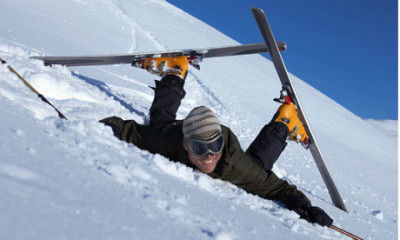Skiing can be an action packed winter past-time, but without proper measures taken, you can have a lousy day. Falls account for 75 to 85 percent of all skiing injuries, according to the American College of Sports Medicine. Falls while on the slopes frequently result in damage to the knee and lower limbs. The most common injury is the medial collateral ligament (MCL) tear, which is typically treated without surgery. In skiing, the MCL is often torn when the ski tips are pointed toward one another in a snowplow position. The second most common injury is the anterior cruciate ligament (ACL) tear. Given the importance of the ACL to the functional stability of the knee, ACL tears often require surgery.

To prevent skiing injuries it is important to remember good skiing technique – Keep your hands and weight forward, legs parallel, and keep the hips, knees, and ankles all flexed equally. It is a good idea to take a few skiing classes with a professional prior to hitting the slopes. Also, it’s important to stay on marked trails. Going off trail, in terrain covered with rocks and trees, can contribute to injuries.
Prepare your body with exercises that strengthen your core and lower extremities. Proper conditioning can make the difference between a fun weekend, and one waylaid by injury. Some good exercises for your legs include squats, lunges, step-ups, and calf raises. Some basic core exercises are crunches, swiss ball crunches, planks, bridges, and medicine ball twists. Three to four weeks of aerobic training, such as running or biking, can help build your endurance when it comes to spending a full day on the slopes.
Proper equipment is also essential to protecting your body; ski boots, bindings, and ski length should all be appropriate for your height and skill level. Finally, it’s important to listen to your body – injuries are more common when you are tired and worn out. Keeping hydrated will help you stay alert while skiing. It may also help to prevent muscle cramps, and aid in post ski recovery.
As you hit the slopes this winter, keep these tips in mind so you can enjoy a long and fun-filled skiing season!
“Preventing Skiing-Related Knee Injuries.” Move Forward PT. American Physical Therapy Association, n.d. Web. 24 Nov. 2015.

